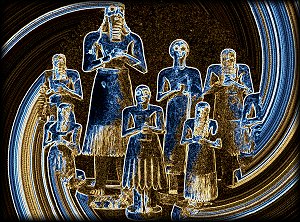 One of the more intriguing books I read not many years ago was Pagan Monotheism in Late Antiquity, edited by Polymnia Athanassiadi and Michael Frede. Its opening chapter by Martin West looks at some of the earliest signs of the transformation of polytheistic religions into monotheistic thought. He begins with Greek and “Near Eastern” (sic) literature.
One of the more intriguing books I read not many years ago was Pagan Monotheism in Late Antiquity, edited by Polymnia Athanassiadi and Michael Frede. Its opening chapter by Martin West looks at some of the earliest signs of the transformation of polytheistic religions into monotheistic thought. He begins with Greek and “Near Eastern” (sic) literature.
The essence of polytheism is that the many gods have independent existences, rarely crossing each others paths as they are respectively called on by devotees to help out with their special talents. A thief would call on a god of thieves for blessing, not the god of justice — unless or until he was himself wronged. The Homeric hero Odysseus was persecuted by the god Poseidon but regularly protected by Athena. The Bible narratives likewise point back to the time when Yahweh was among many gods with his own distinct provenance:
You have the right to take what Chemosh your god gives you, but we will take the land of all whom the Lord our God has driven out before us (Judges 11:24)
But Homer, West argues, also introduces readers to something contrary to true polytheism. The gods meet in council and subsume their individual wills to their exalted chief, Zeus. Continue reading “How Polytheism morphed into Monotheism: first steps”
